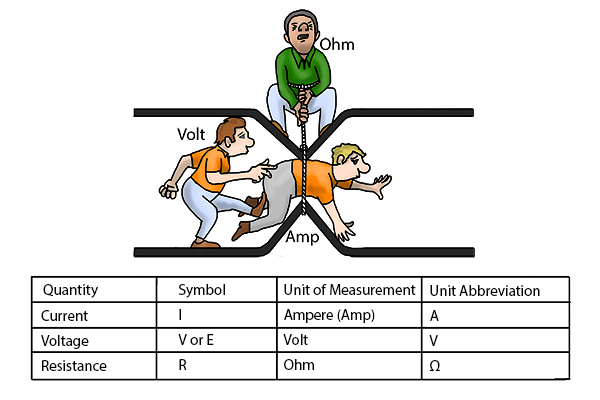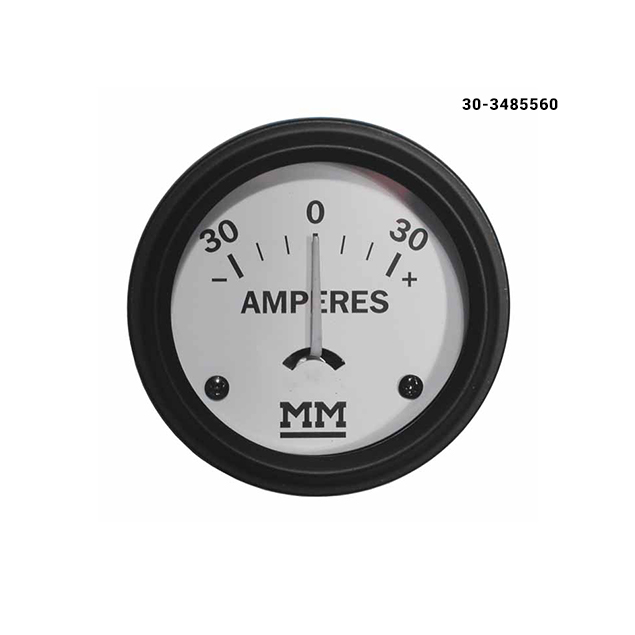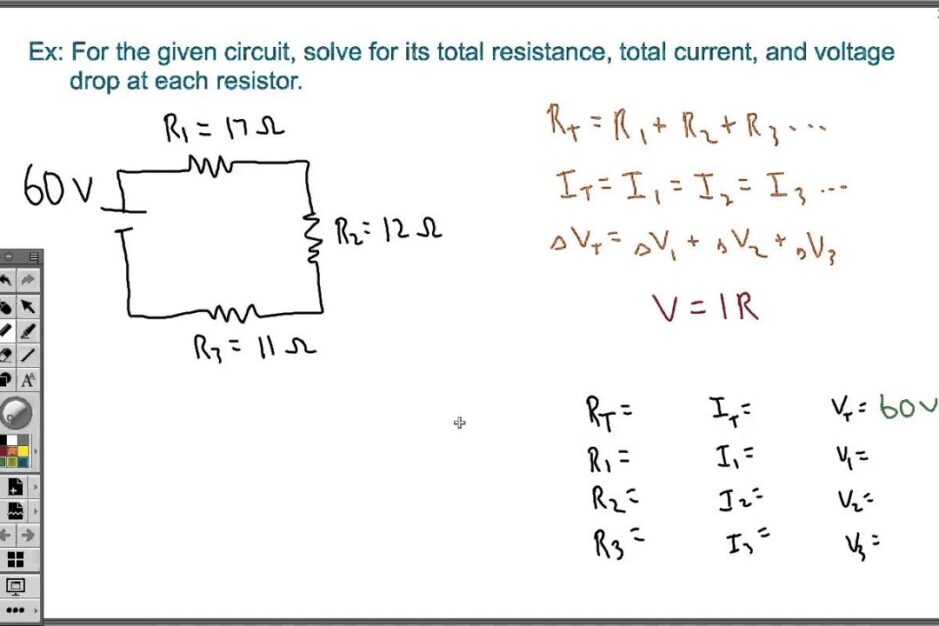Amperes measure the flow of electric current in a circuit. One ampere equals one coulomb of charge passing a point per second.
Amperes, commonly abbreviated as “A,” are a fundamental unit in electrical engineering. Named after André-Marie Ampère, a pioneer in electromagnetism, they quantify the rate of electron flow in a circuit. Electric current, measured in amperes, is crucial in determining the performance and safety of electrical devices.
Understanding amperes helps in designing circuits, selecting appropriate components, and ensuring devices operate efficiently. For instance, household appliances have specific current ratings that must be adhered to for safe operation. Proper knowledge of amperes is essential for anyone working with electrical systems, from hobbyists to professional engineers.

Credit: www.popsautoelectric.com
What Is Electric Current?
Electric current is the flow of electric charge. It moves through a conductor. This flow is crucial in our daily lives. Let’s explore its basic definition and its importance.
Basic Definition
Electric current is measured in amperes (A). It flows from high to low potential. The flow can be direct (DC) or alternating (AC).
In a DC current, electrons move in one direction. In an AC current, electrons change direction periodically.
Current needs a closed circuit to flow. This means there must be a complete path for the electrons.
Importance In Everyday Life
Electric current powers our homes and devices. Without it, we wouldn’t have lights or computers.
- Home Appliances: Items like fridges and microwaves need electric current.
- Communication: Phones and internet rely on electric current.
- Transportation: Electric cars and trains use electric current.
Electric current also plays a role in our health. Medical devices like X-rays and MRIs use it. It’s essential for modern medicine.
Understanding electric current helps us use it safely. It also helps in creating new technologies.
Units Of Electric Current
Measuring electric current is crucial in understanding electricity. The unit of electric current helps us know how much charge flows through a circuit. This helps in designing and using electrical devices safely and effectively.
The Ampere
The Ampere, often shortened to Amp, is the main unit of electric current. It is named after Andre-Marie Ampere, a French scientist. One Ampere equals the flow of one coulomb of charge per second. It is a standard unit used in everyday devices.
The symbol for Ampere is A. For example, a 5A current means five amperes of current. The Ampere is part of the International System of Units (SI). It is used globally for measuring electric current.
Other Units
There are smaller and larger units of electric current. These help in measuring very small or very large currents.
| Unit | Symbol | Value |
|---|---|---|
| Milliampere | mA | 0.001 A |
| Microampere | µA | 0.000001 A |
| Kiloampere | kA | 1,000 A |
The Milliampere (mA) is one-thousandth of an Ampere. It measures small currents, like in mobile chargers.
The Microampere (µA) is one-millionth of an Ampere. It is used in sensitive electronic devices.
The Kiloampere (kA) is one thousand Amperes. It measures very large currents, like in industrial machines.
How Electric Current Works
Electric current is the flow of electric charge. This flow happens through a conductor. Understanding how electric current works is essential. It powers our homes, gadgets, and industries.
Flow Of Electrons
The flow of electric current relies on electrons. Electrons are tiny particles. They carry a negative charge. In a conductor, these electrons move freely. This movement creates an electric current.
Imagine a pipe filled with water. When you push water into one end, it flows out the other. Similarly, electrons flow from one end of a conductor to the other. This is how electric current works.
Electric current is measured in amperes, often shortened to amps. One ampere equals one coulomb of charge passing a point per second. This measurement helps us understand the strength of the electric current.
Conductors And Insulators
Conductors and insulators play vital roles in electric current. A conductor allows electrons to flow easily. Examples include copper, aluminum, and gold. These materials make excellent conductors.
Insulators, on the other hand, block the flow of electrons. Common insulators are rubber, glass, and plastic. Insulators protect us from electric shocks. They also help direct the flow of current where needed.
Below is a table summarizing the key differences:
| Property | Conductors | Insulators |
|---|---|---|
| Electron Flow | Easy | Blocked |
| Examples | Copper, Aluminum | Rubber, Glass |
| Usage | Wiring, Circuits | Safety, Insulation |
Measuring Electric Current
Measuring electric current is crucial for understanding how electricity flows. Electric current is measured in amperes (A). The correct tools make this task simple and safe.
Using An Ammeter
An ammeter is the main tool used to measure electric current. It is connected in series with the circuit.
- First, turn off the power supply.
- Next, connect the ammeter in series with the circuit.
- Finally, turn on the power to get the reading.
Ensure the ammeter’s range matches the expected current. This prevents damage to the device.
Safety Precautions
Safety is essential when measuring electric current. Follow these steps to stay safe:
- Always turn off the power before connecting the ammeter.
- Use insulated tools to avoid electric shocks.
- Never exceed the ammeter’s maximum current rating.
- Wear protective gear, like gloves and safety glasses.
These precautions help prevent accidents and ensure accurate measurements.
Types Of Electric Current
Understanding the types of electric current is crucial. The two main types are Direct Current (DC) and Alternating Current (AC). Each has unique characteristics and uses.
Direct Current (dc)
Direct Current (DC) flows in one direction. This type of current is steady and constant.
Common sources of DC are batteries and solar cells. DC is often used in small electronic devices.
| Source | Example Devices |
|---|---|
| Batteries | Flashlights, Remote Controls |
| Solar Cells | Solar Panels, Calculators |
Alternating Current (ac)
Alternating Current (AC) changes direction periodically. This type of current is used in homes and businesses.
AC is generated by power plants. It travels long distances through power lines.
Here are some key features of AC:
- Changes direction 50-60 times per second.
- Can be easily transformed to different voltages.
- Ideal for large-scale power distribution.
Both DC and AC are essential. They power different devices and systems. Understanding their differences helps in choosing the right power source.

Credit: www.rfparts.com
Ohm’s Law
Ohm’s Law is a fundamental principle in electrical engineering. It relates the current, voltage, and resistance in a circuit. Understanding this law helps in designing and troubleshooting electrical systems. Ohm’s Law is essential for anyone working with electronics or electricity.
Understanding The Equation
Ohm’s Law is represented by the equation: V = IR. Here, V stands for voltage, I represents current, and R is resistance. This equation shows the relationship between these three components.
Voltage (V) is the potential difference across two points. Current (I) is the flow of electric charge. Resistance (R) is the opposition to the flow of current. Using this formula, you can calculate any one of these values if you know the other two.
| Quantity | Symbol | Unit |
|---|---|---|
| Voltage | V | Volts (V) |
| Current | I | Amperes (A) |
| Resistance | R | Ohms (Ω) |
Practical Applications
Ohm’s Law is used in many practical applications. Here are a few examples:
- Designing Circuits: Engineers use Ohm’s Law to design circuits with precise voltage and current.
- Troubleshooting: Technicians use it to find faults in electrical systems.
- Component Selection: Choosing the right resistor value for a circuit involves Ohm’s Law.
For instance, if you know the voltage and current, you can find the resistance needed. This is useful in creating safe and efficient electrical designs.
Another application is in household appliances. Understanding the relationship between voltage and current helps in ensuring devices work correctly and safely.
Common Sources Of Electric Current
Understanding the sources of electric current is important. Electric current powers many devices in our daily lives. Two common sources of electric current are batteries and generators.
Batteries
Batteries are a popular source of electric current. They convert chemical energy into electrical energy. Batteries come in different types and sizes. Some common types of batteries are:
- Alkaline batteries
- Lithium-ion batteries
- Nickel-cadmium batteries
Alkaline batteries are often used in remote controls. Lithium-ion batteries power smartphones and laptops. Nickel-cadmium batteries are used in some rechargeable devices.
| Type | Common Use |
|---|---|
| Alkaline | Remote controls |
| Lithium-ion | Smartphones |
| Nickel-cadmium | Rechargeable devices |
Generators
Generators are another source of electric current. They convert mechanical energy into electrical energy. Generators are used in many places:
- Power plants
- Emergency backup systems
- Portable power supplies
In power plants, generators produce electricity for homes and businesses. Emergency backup systems use generators during power outages. Portable generators are useful during outdoor activities.

Credit: en.wikipedia.org
Safety Tips
Electricity is powerful and can be dangerous. Knowing safety tips is essential. This section highlights how to stay safe around electricity.
Avoiding Electrical Hazards
Follow these tips to avoid electrical hazards:
- Never touch electrical appliances with wet hands.
- Avoid using damaged cords or plugs.
- Keep electrical devices away from water.
- Unplug appliances when not in use.
- Use proper insulation on all electrical wires.
First Aid For Electrical Injuries
In case of an electrical injury, follow these steps:
- Do not touch the injured person directly.
- Turn off the power source immediately.
- Call emergency services right away.
- Perform CPR if the person is not breathing.
- Cover burns with a sterile cloth or bandage.
Understanding these safety tips can save lives. Always be cautious around electricity.
Frequently Asked Questions
What Is An Ampere?
An ampere, or amp, measures electric current. It indicates the flow of electric charge per second in a circuit.
How Is Ampere Defined?
An ampere is defined as one coulomb of charge passing through a point in one second.
Why Are Amperes Important In Electricity?
Amperes are crucial for determining the current in electrical circuits. They help ensure safe and efficient energy use.
How To Measure Amperes?
Amperes are measured using an ammeter. It is connected in series with the circuit to detect current flow.
Conclusion
Understanding amperes is crucial for anyone dealing with electrical systems. It helps ensure safety and efficiency. Keep learning about electrical measurements to enhance your skills. Always prioritize safety and accuracy when working with electricity. By mastering the concept of amperes, you can confidently handle various electrical tasks and projects.








1 thought on “Amperes: Understanding Electric Current for Beginners”